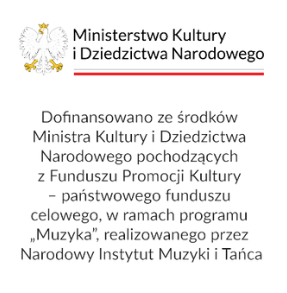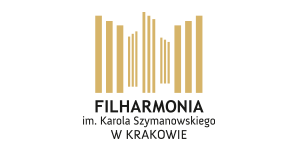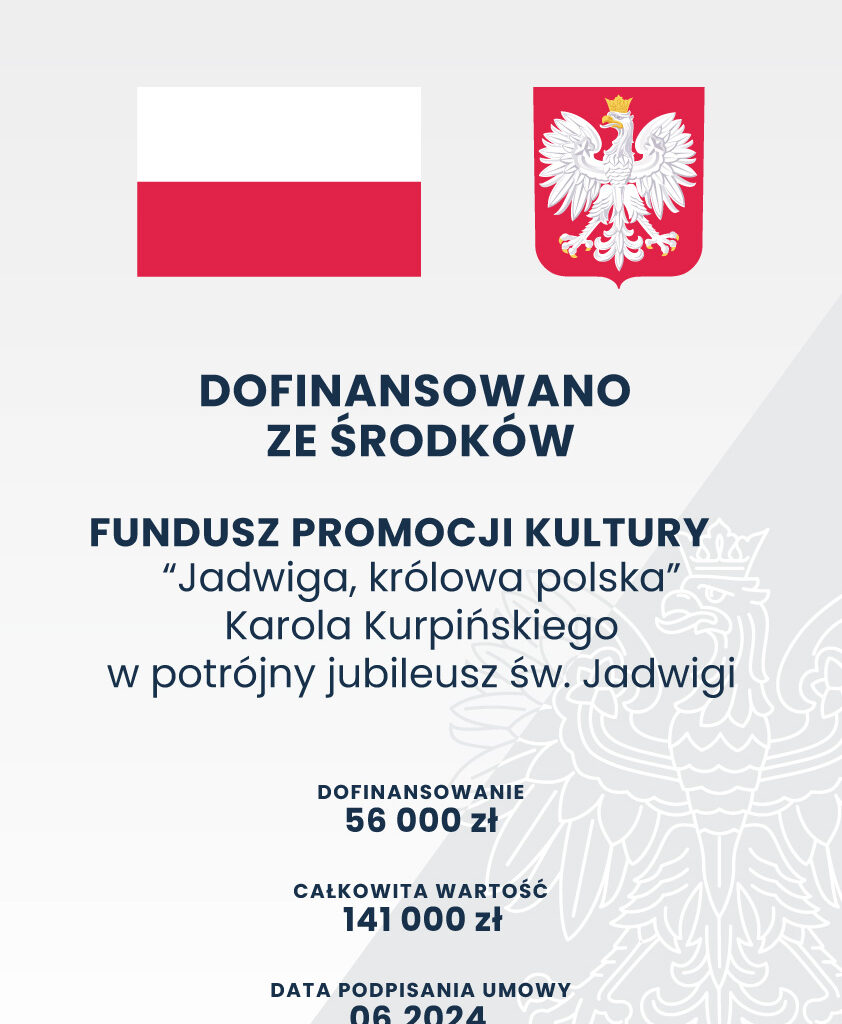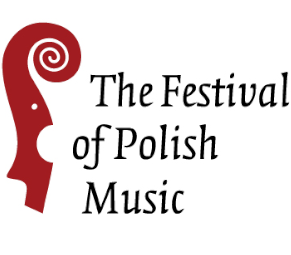at 7 p.m.
INAUGURAL CONCERT OF THE FESTIVAL
ensemble Peregrina
INAUGURAL CONCERT OF THE FESTIVAL
SILESIA
Music from Silesian sources in the 14th-15th centuries
NATIVITAS
Als die sonne/Dies est letitie – cantio
The Silesian Wednesday hymnbook (monody)/The Zagan Partes (polyphony)
Eia felix virgula – cantio
Partes from Żagań (stanzas 2-3: The Songbook of the Poor Clares of Wrocław)
Liber generationis
Sroda Śląska hymnbook
Tamquam sponsus – antiphon
fragments from the Church of St. Elisabeth in Wrocław
ST. BARBARA
Eia sponsa Salomonis – antiphon (instrumental version)
Partes from Żagań
Rex in cena – antiphon
Partes d’Żagań
All. Ave virgo, sacra Barbara
Graduale of Wrocław Cathedral
Gratulemur concinantes – cantio
Partes from Żagań
ST. JADWIGA
All. O felix Hedvigis – Alleluia verse
Gradual from Henryków
Letentur ecclesia – sequence
Gradual from Brzeg
Fulget dies – sequence
Gradual from Brzeg
O decus Trebniciae – antiphon
Partes from Żagań
MARIA
Ave Dei genitrix – cantio
Partes deagana (stanza 2 & 3: orationale from Prague)
Veni mater deica – sequence
Gradual from Żagań
Deitatis fragrans – cantio
Sroda Śląska hymnbook (refrain: manuscript from Polling)
O florens rosa – antiphon
Hymnbook of Środa Śląska (monody)/Gologów songbook (polyphony)
Rosarum rosa – cantio
Hymnbook of Środa Śląska
Ensemble Peregrina (Basel)
Agnieszka Budzińska-Bennett – vocal, gothic harp, artistic direction
Lorenza Donadini – vocal
Hanna Järveläinen – vocal
Grace Newcombe – vocal, gothic harp
Elizabeth Rumsey – fiddle
Primary sources:
Kraków, Jagiellonian Library, Ms. Mus. 40098 (Żagań Partes, olim Śpiewnik głogowski/Glogauer Liederbuch, Żagań, 1475-82)
Wrocław, Chapter Library, Ms. 58 (Cancionał ze Środy Śląskiej/Neumarkt Cantionale, ca. 1474-1484)
Wrocław, University Library, Ms. 51322 Mus. (Gradual from Brzeg, 14th/15th c.)
Wrocław, University Library, Ms. I F 417 (Gradual from Henryków, early 14th century)
Wrocław, University Library, Ms. I F 387 (a gradual from Żagań, mid-fifteenth century)
Wrocław, University Library, Ms. I F 269 (fragments from St Elizabeth’s Church, c. 1430)
Wrocław, University Library, Ms. R 504, c. 1495 (graduals of Wrocław Cathedral)
Supplementary sources:
München, Bayerische Staatsbibliothek, clm 11943 (miscellanea, Polling, mid-16th century).
Praha, Archiv Pražského hradu, Knihovna Metropolitní kapituly, MS Cim 7 (Roudnice/Raudnitz Psalter/Raudnitz Psalter, late 14th century).
Praha, Národní knihovna, ms. XIII E 3 (orationale, 15th c.)
Praha, Národní knihovna, ms. X E 2 (cancionale, 15th/16th c.)
Wrocław, University Library, Ms. I O 108 (Songbook of the Poor Clares of Wrocław, early 17th century)
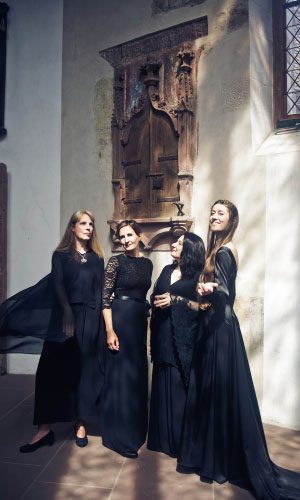

In Silesia - an area that over the centuries has been in the orbit of Polish, Czech and German cultural influences - one can find manifestations of a rich musical creativity. Although Silesia remained for centuries on the sidelines of the main musical centres, its inhabitants were able to assimilate the most important developmental impulses of European music. In this land, we find examples of both medieval religious monody (Gregorian chant, including works associated with the cult of St Jadwiga, the patron saint of Silesia), as well as manifestations of polyphonic music (...).
From the Christmas songs, Silesian unica have been selected for our programme. The three-voice song Eia felix virgula is annotated in the Partes of Zagan as Hymnus de beata Marie in nativitate domini. The first stanza preserved there was supplemented by two further stanzas preserved in a much later prayer book and hymnbook of the Poor Clares of Wrocław. The song Dies est letitie, popular all over Europe, is presented here in a unique three-voice version from the Żagań Partes and in a German one-voice version from the Śród Śląski Kancjonał – Als die sonne durchdringt das glasz. From the latter manuscript comes the polyphonic Liber generationis presenting the genealogy of Jesus. It is a text taken from the beginning of the Gospel according to St Matthew, sung on Christmas Eve. In the Silesian manuscript, this composition is preserved with an exceptionally ornate final melisma in triple voice on the word ‘Christus’. An absolute unicum is the three-voice antiphon Tamquam sponsus from a 15th-century manuscript from St Elizabeth’s Church in Wrocław.
Written at the end of the 15th century, the Zagan Partes, previously known as the Glogau Songbook (Glogauer Liederbuch), is one of the best-known collections of music from Central Europe. Now stored in the Jagiellonian Library in Kraków, it consists of three separate voice books – partes (discantus, tenor, contratenor) – and contains nearly 300 multi-voice secular and sacred compositions in Latin, German and French. It is also the source of many unique compositions dedicated to another saint popular in Silesia – the martyr Barbara. St Barbara, according to tradition, lived at the turn of the 3rd and 4th centuries and was the extraordinarily beautiful daughter of the wealthy pagan Dioscurus. For accepting baptism and taking a vow of chastity, she was confined and starved by him in a tower and then handed over to a court, which sentenced her to flogging and numerous tortures. She was eventually beheaded with a sword by her own father. The text of the three-voice chanting antiphon Rex in cena poetically depicts Christ summoning Barbara, his bride, to a feast where he presents her with a garland of bloody roses (similar to St Cecilia’s symbol of martyrdom) and a white robe (symbol of chastity). The glory of the martyr is also extolled in the text Gratulemur concinantes from the Partes of Zagan. This short three-voice piece has survived with only one stanza, hence it was expanded with an instrumental postlude. The three-voice antiphon Eia sponsa Salomonis from the same source in honour of St Barbara will also be presented in an instrumental version.
The region’s patron saint, St Jadwiga (1178/1180-1243), wife of Henry I the Bearded, Duke of Wrocław, and mother of Henry II the Pious, became famous as the founder of churches and monasteries. She brought in clergymen and settlers from her native Germany, which contributed to a significant revival of religious life and the development of agriculture in Silesia, she carried out charitable activities, opened hospitals for the poor, cripples and lepers, took care of prisoners and those who fell into disfavour with the duke, always trying to ask him to commute their sentences. She took special care of a group of girls from different backgrounds – providing them with a careful upbringing, she predominantly assigned them to the monastic life in the Cistercian nunnery she established in Trzebnica, where she herself died and was buried. As a result of numerous miracles that were said to have occurred at her tomb, almost a quarter of a century later, in 1267, Pope Clement IV canonised Jadwiga, who began to be venerated as the patron saint of Poland and Silesia, especially of Wrocław and Trzebnica. The saint’s charitable deeds were described in works intended for the liturgy, written in Silesia as early as the 13th century. The highly melismatic alleluia verse O felix Hedvigis expresses a request for the saint’s intercession with Christ. This piece is recorded in a 13th- and 14th-century gradual from the Cistercian monastery in Henryków, which Jadwiga repeatedly supported financially. Silesia itself is mentioned in the Letentur ecclesia sequence with a Polish melody, which also describes miracles performed by the saint, such as the revival of a condemned man or the restoration of sight to the daughter of Pope Clement – it was the personal experience of a miracle that ultimately convinced him to carry out Jadwiga’s canonisation. Both this and another Polish sequence, Fulget dies, mention the saint’s love of asceticism, who not only tolerated no excesses and cultivated abstinence, but also mortified herself through hunger strikes, going barefoot, flagellation and wearing a hairpiece and penitential belt (domabat cilicio corpus et ieiunio nudis ibat pedibus). This piece comes from a 15th-century gradual from the collegiate church in Brzeg dedicated precisely to St Jadwiga. Another special piece in honour of the saint is the three-part antiphon to the Magnificat from Partes Żagańskie – O decus Trebniciae, in which Jadwiga is again called mater gratie (mother of grace) and the titular ‘ornament of Trzebnica’. The melody taken from the liturgy, customarily used in this source as a cantus firmus in the highest voice, is often transferred to the middle voice in this work, allowing for a more free and creative development of the chorale material.
A relatively little-studied source is the 15th-century Śród Śląski Kancjonał (Neumarkt Cantionale), whose repertoire shows close links with those from Czech and German sources. This cantional contains beautiful Marian antiphons and cantiones, many of which found their way into our programme. The dynamic cantio Rosarum rosa, celebrating Mary as the new Abigail, Judith and Esther, presented here with improvised polyphony, is also found in a Franciscan graduale from Prague (Knihovna Národního muzea, ms. XII A 1). A related variant of the song Deitatis fragrans cella (with a slightly different incipit) can also be found in this source – a two-voice version from Środa Śląska was selected for our programme. This piece, incorrectly noted here as Deitatis fragrans stella, is one of only three large-voice pieces preserved in this cancion. For the purposes of our programme, this composition has been supplemented with a missing refrain from a South German source from the 16th century. Also from the Środa Śląska manuscript comes Ave Dei genitrix – a super Ave Maria song, i.e. a piece with multiple stanzas beginning with successive words of the Hail Mary prayer, here presented only in the initial stanzas taken from the Czech source. The Marian song block is completed by the sequence Veni mater deica, based on the well-known melody Veni Sancte Spiritus, with a new text, probably written in Silesian Augustinian circles.
Agnieszka Budzińska-Bennett
